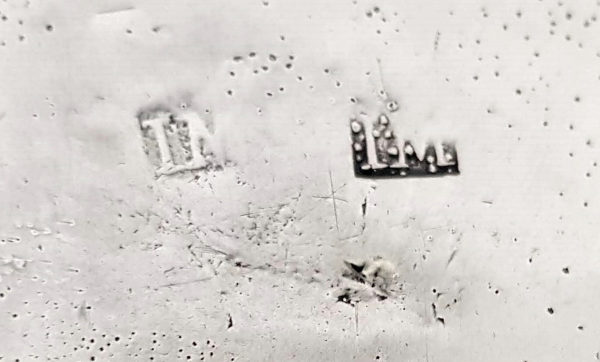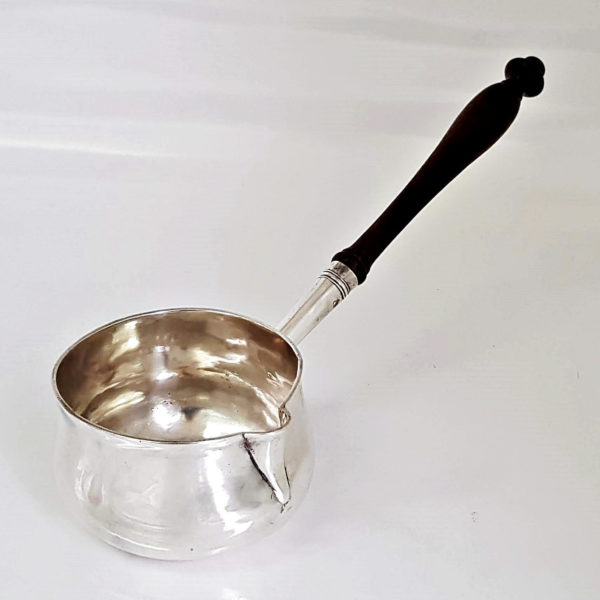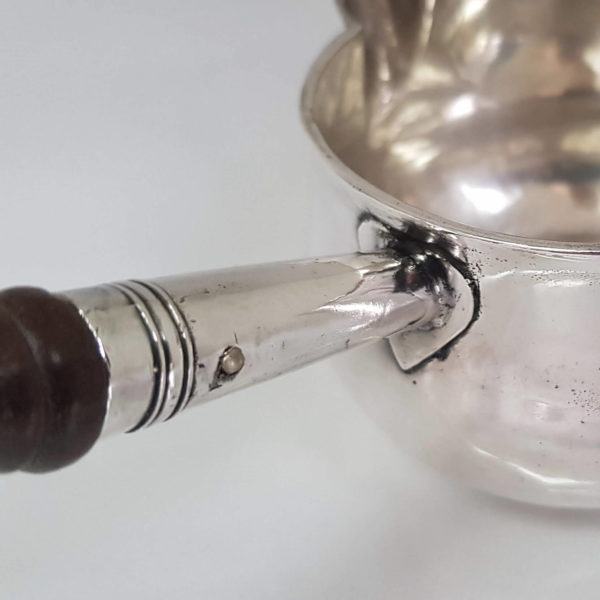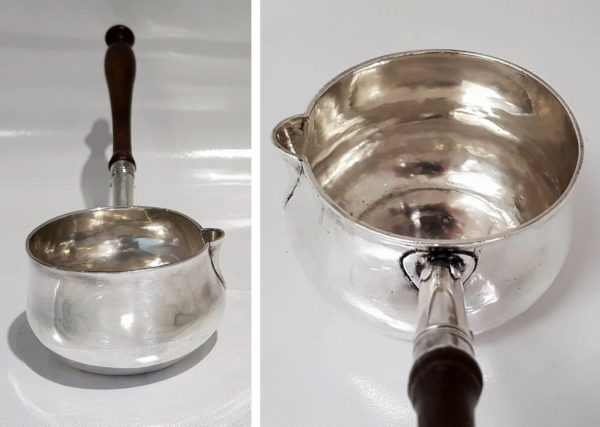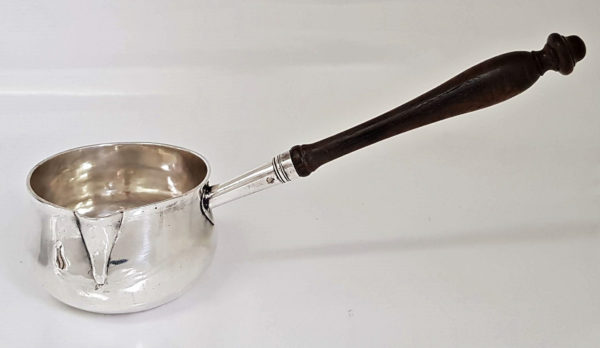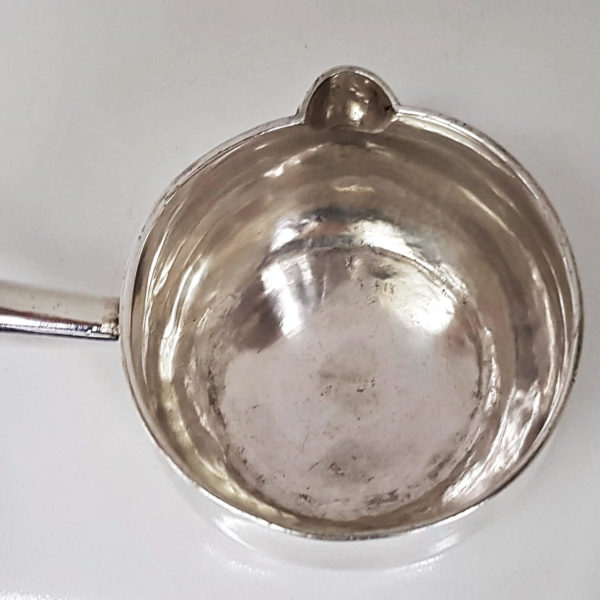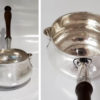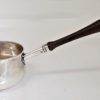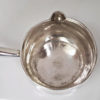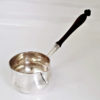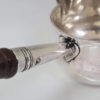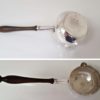Antique Exeter Silver Brandy Pan
SOLD
Stock: 9749
Date: Circa 1720
Maker: John Murch
Country: England
A rare piece of early provincial silver. An antique silver brandy warmer of bellied form with a turned wooden handle....
Description
Condition
The little silver saucepan is in very good condition. Good colour. The turned wooden handle is probably original. Stamped underneath with the Exeter town mark (rubbed) and maker’s mark “IM” for John Murch stamped twice. Please note that this item is not new and will show moderate signs of wear commensurate with age. Reflections in the photograph may detract from the true representation of this item.
Maker Information
Maker: John Murch
John Murch, of Exon, Devon, apprenticed to William Cory of London and Warminster in 1684. By 1694 Murch had established himself as a goldsmith in Plymouth, a wealthy, bustling and vibrant city with many silversmiths and artisans. Exeter also had many skilled silversmiths and as a result an assay office was established in Exeter in 1700. John Murch became a well-known silversmith and like many others he worked in other jobs to supplement his income. He is listed as a surveyor of Highways for St. Andrews parish in 1709. He designed and produced a variety of items, some of which are shown here and have become very collectable. Many items are now held in museums. In 1717 John Murch departed from Plymouth and moved to Tiverton, another prosperous town to the east of Devon, with his family. He is recorded in the Exeter Goldsmiths Company Minute Book records on November 10th 1720 as entering his mark as “IM”. Murch did not always submit silver that he had worked to his local Exeter assay office for testing. Instead he adopted the standard practice of many silver makers at that time, of stamping the piece three times with his maker's mark "IM". It can appear at first sight that the two smaller (and sometimes indistinct) punch-marks that supplement his larger maker's mark are formal assay marks.
Our Guarantee
Customer satisfaction is our primary concern
All silverware on our website is checked thoroughly prior to offering it for sale and every product listing contains a condition report and details of the silver hallmarks.
All items offered on our website include:
- Free Shipping Worldwide
- Tracked and Insured
- 14 day no quibble money back guarantee
- We are accredited members of LAPADA and conform to their strict professional standards
- We dispatch 1-3 days after receiving cleared payments
More detailed information about deliveries, returns and how to pay is available in the Help section at the bottom of this page.
